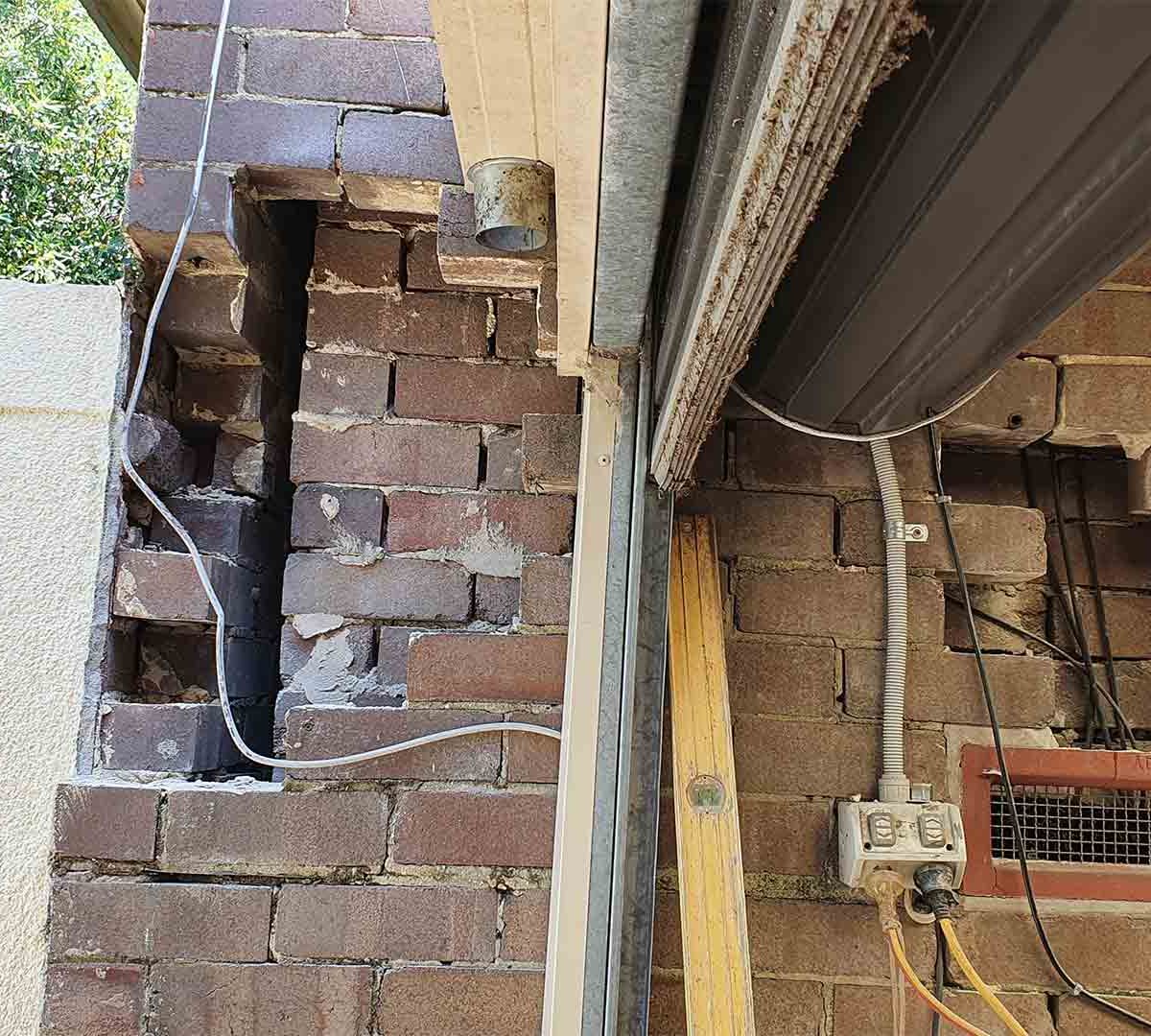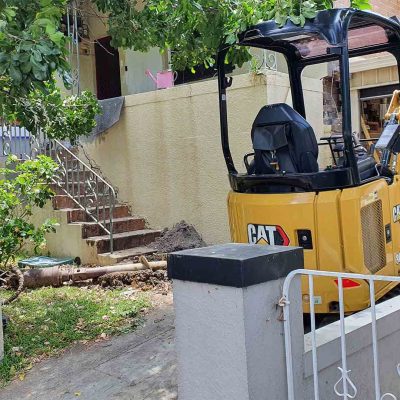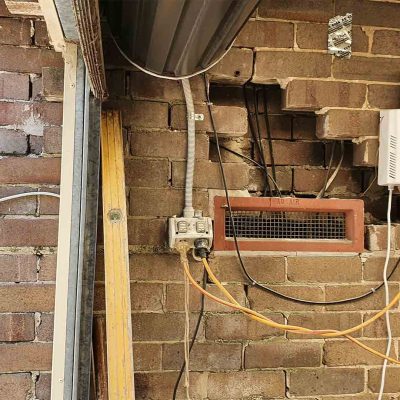A retaining wall is a structure designed to hold back soil or other materials, preventing them from eroding or collapsing. It is commonly used to create a level surface on sloped terrain and provide structural support to prevent soil movement.
Since 2008, amendments to section 3 of the Dividing Fences Act 1991 (NSW) allow an adjoining owner to ask for a contribution when building or fixing a retaining wall that is necessary for the support and upkeep of a dividing fence. You and your neighbour must be careful not to do anything that might take away support from each other’s land. For instance, if you dig on your property and it damages your neighbour’s land, you could be responsible for the harm caused. The Dividing Fences Act 1991 doesn’t cover the cost of building, fixing, or keeping up a retaining wall unless it’s needed to support and maintain the dividing fence.
Retaining walls are really important to stop soil from washing away and to keep the land steady. But when it comes to figuring out who pays for them, it’s important to be clear. Here, we will look into the rules and things to think about when it comes to who’s responsible for paying for retaining walls in NSW.
What Is the Purpose of a Retaining Wall?
A retaining wall serves the purpose of supporting and retaining soil, preventing erosion, and creating level ground on sloped landscapes. It helps to manage and control the lateral pressure of soil, especially in areas with uneven terrain, and can enhance the stability of structures and landscapes. In addition to its functional roles, a retaining wall in Sydney also contributes to the aesthetic appeal of a landscape. It can be designed with various materials and styles to complement the overall look of the environment, turning a utilitarian structure into a visually pleasing element of the landscape.
Who Should Pay?
You and your neighbour need to be cautious about doing things that could remove support from each other’s land. For example, if you dig on your property and it causes damage to your neighbour’s land, you might have to take responsibility for the harm. The Dividing Fences Act 1991 doesn’t handle the expenses of constructing, repairing, or maintaining a retaining wall unless it’s necessary for supporting and keeping up the dividing fence. How much it costs to build, fix, or take care of a retaining wall depends on whether it’s needed to support and keep up a dividing fence between your properties. It’s a good idea to ask a structural engineer for their opinion by getting a report. Also, consider getting advice from a legal expert.
If you have proof that the wall is needed to support and take care of a dividing fence, you can talk with your neighbour and request them to share the cost. You can consider mediation at a Community Justice Centre (CJC), send a notice about the fence, and can apply to the NSW Civil and Administrative Tribunal if an agreement can’t be reached. If the retaining wall is not required to hold up or keep the dividing fence in good condition, it’s a good idea to seek legal advice for your specific situation.
Law of Support: In New South Wales (NSW), there’s a rule called the Law of Support. This means that your land is entitled to receive support. Before, if someone messed with their land in a way that took away support from another piece of land, it was considered a nuisance. But now, the law of negligence is in place. According to the Conveyancing Act 1919, section 177, people must be careful not to do anything on or related to their land that takes away support from any other land. This includes messing with the surface of the soil, the layers underneath, any part that’s reclaimed land, and even the water below.
This part permits someone to take legal action for negligence, which is failing to fulfil the duty of care. This legal action can be taken if there is harm caused by taking away any natural support or a structure that replaced the natural support. This covers actions that:
A) Harms supported land
B) Puts the supported land and its structures in danger
C) Prevents the supported land from safely holding up any structures that might be built on it in the future.
A clear agreement between people can lessen or remove the responsibility to be careful. If this agreement is written and officially recorded as an easement to remove support for that particular land, it can affect owners who come after and are connected to the affected land.
What If an Agreement Is Not Reached?
It’s important to tell your neighbour if you plan to put up, repair, or change a dividing fence. The Dividing Fences Act of 1991 doesn’t cover the cost of building, fixing, or keeping up a retaining wall unless that wall is needed to support and maintain the dividing fence. If you have proof showing that the wall is necessary for the support and upkeep of a dividing fence, you can talk to your neighbour and request them to chip in and help pay for it.
If you and your neighbour can’t agree, you can do the following:
A) Ask for help from a Community Justice Centre to mediate the situation.
B) Alternatively, you can seek a resolution by applying to the NSW Civil and Administrative Tribunal for an order to settle the disagreement.
In case you and your neighbour can’t agree on a retaining wall matter, consider mediation at the Community Justice Centre (CJC). This is an informal process where a neutral person, known as a ‘mediator,’ assists in resolving the dispute. The NSW Civil and Administrative Tribunal (NCAT) won’t handle retaining wall disputes unless there’s evidence showing the wall is necessary for supporting and maintaining a dividing fence. Typically, retaining wall disputes are addressed in the Supreme Court of NSW. Before taking any legal action, it’s advisable to seek legal advice since these disputes can be intricate and costly.
Is Permission Needed to Build a Retaining Wall?
Building a retaining wall in Sydney often needs approval through a Development Application (DA). Verify this with your local council. Usually, putting up a retaining wall doesn’t require a Development Application, but it’s crucial to consult your council to make sure you’re following the correct rules. If you’re not certain whether your wall meets these regulations, it’s a good idea to confirm with your local council before beginning the construction.
If you’re building a retaining wall in New South Wales (NSW), you don’t have to ask the council for approval if your wall follows these rules:
A) Not higher than 60 centimetres above or below the ground
B) Positioned at least one metre away from any property boundary, easement, sewer, or water mains
C) Is at least two metres away from any other retaining wall on the property
D) Does not impact any heritage site or environmentally sensitive area
E) Is not constructed in a flood control area
F) Is a minimum of 40 metres away from any natural water body
If you find out from your local council that you must get permission before constructing your concrete retaining wall, it’s important not to start building until you have the necessary approval. Contact your local council to learn about the specific steps to get approval because each council may have its own procedures. You can also seek assistance from reputed retaining wall contractors to get proper clarity on all rules and regulations.
In a Nutshell
Deciding who should cover the cost of a retaining wall in NSW requires looking closely at property boundaries, shared advantages, and the reasons why the wall is necessary. While there are government rules to follow, talking openly with neighbours and having a clear grasp of the wall’s specific situation are really important.



